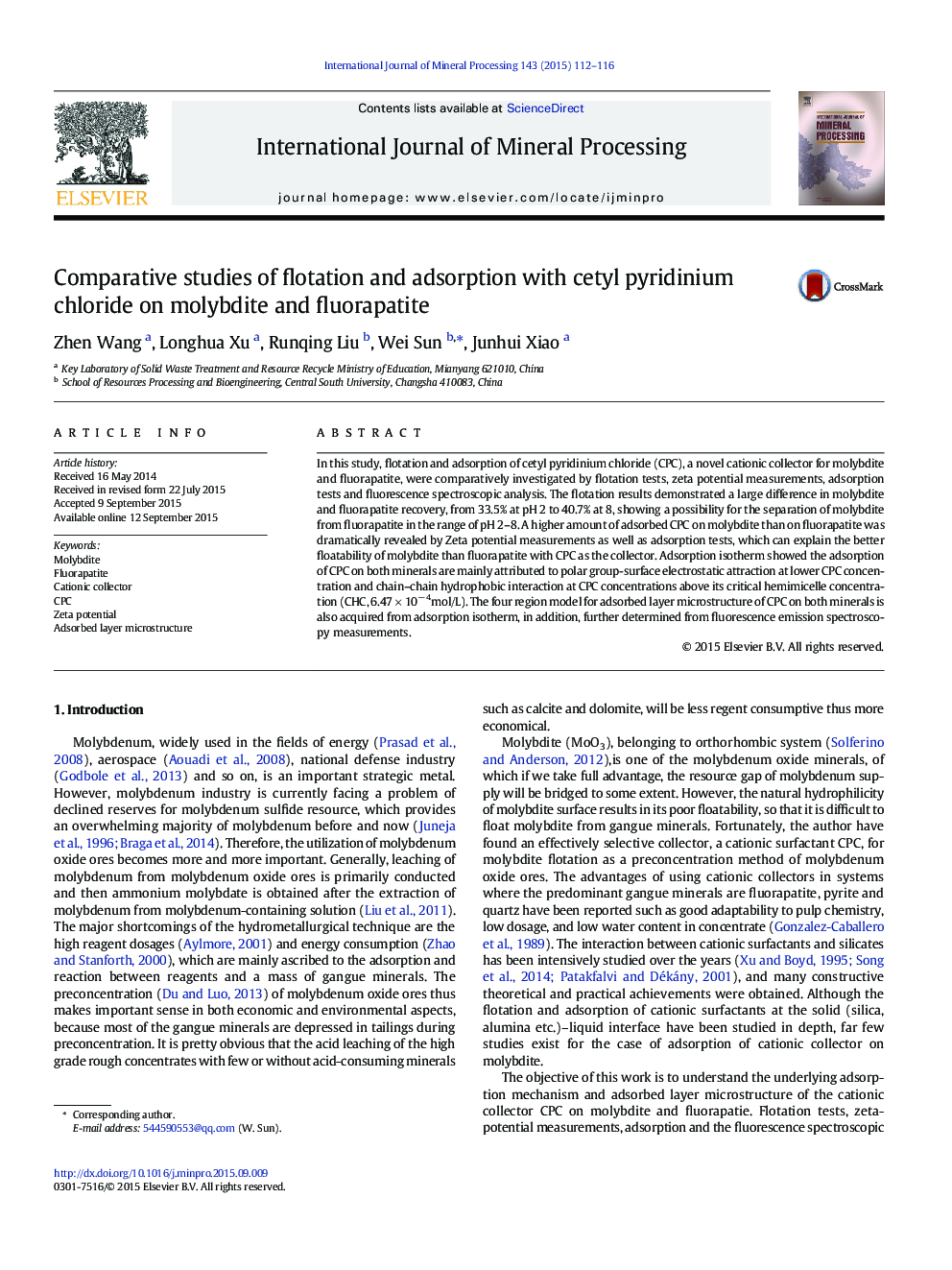| Article ID | Journal | Published Year | Pages | File Type |
|---|---|---|---|---|
| 213766 | International Journal of Mineral Processing | 2015 | 5 Pages |
•Flotation of molybdite from fluorapatite in pH 2–8 using CPC can be achieved.•CPC adsorption on both minerals is attributed to electrostatic and hydrophobic interaction.•The adsorbed layer microstructure of CPC on both minerals is in accord with the four region model.
In this study, flotation and adsorption of cetyl pyridinium chloride (CPC), a novel cationic collector for molybdite and fluorapatite, were comparatively investigated by flotation tests, zeta potential measurements, adsorption tests and fluorescence spectroscopic analysis. The flotation results demonstrated a large difference in molybdite and fluorapatite recovery, from 33.5% at pH 2 to 40.7% at 8, showing a possibility for the separation of molybdite from fluorapatite in the range of pH 2–8. A higher amount of adsorbed CPC on molybdite than on fluorapatite was dramatically revealed by Zeta potential measurements as well as adsorption tests, which can explain the better floatability of molybdite than fluorapatite with CPC as the collector. Adsorption isotherm showed the adsorption of CPC on both minerals are mainly attributed to polar group-surface electrostatic attraction at lower CPC concentration and chain–chain hydrophobic interaction at CPC concentrations above its critical hemimicelle concentration (CHC, 6.47 × 10− 4mol/L). The four region model for adsorbed layer microstructure of CPC on both minerals is also acquired from adsorption isotherm, in addition, further determined from fluorescence emission spectroscopy measurements.
